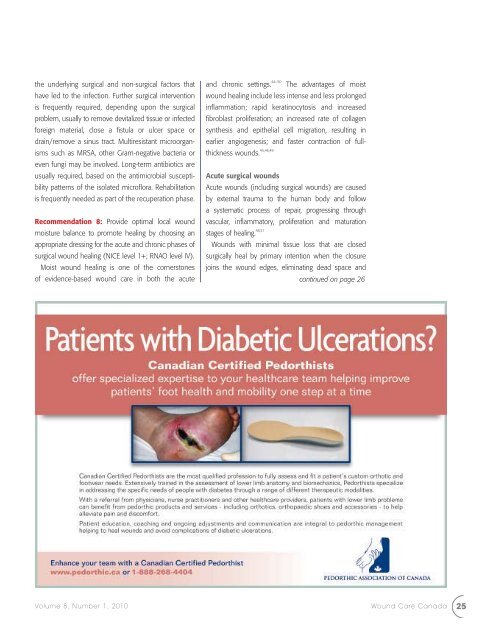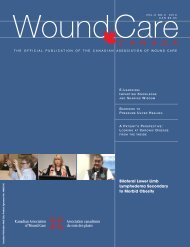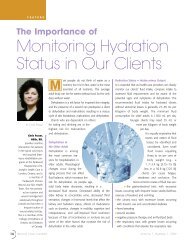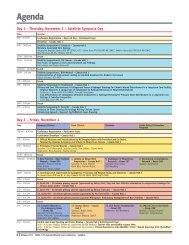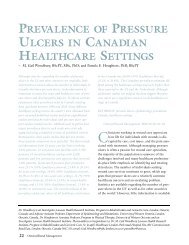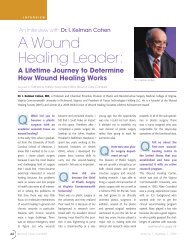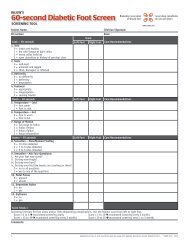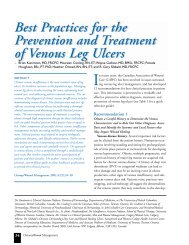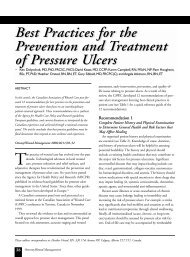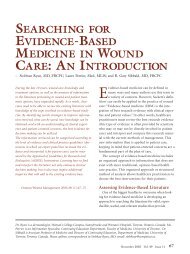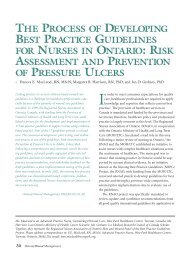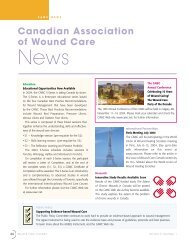Best Practice Recommendations for the Prevention and ...
Best Practice Recommendations for the Prevention and ...
Best Practice Recommendations for the Prevention and ...
You also want an ePaper? Increase the reach of your titles
YUMPU automatically turns print PDFs into web optimized ePapers that Google loves.
<strong>the</strong> underlying surgical <strong>and</strong> non-surgical factors that<br />
have led to <strong>the</strong> infection. Fur<strong>the</strong>r surgical intervention<br />
is frequently required, depending upon <strong>the</strong> surgical<br />
problem, usually to remove devitalized tissue or infected<br />
<strong>for</strong>eign material, close a fistula or ulcer space or<br />
drain/remove a sinus tract. Multiresistant microorganisms<br />
such as MRSA, o<strong>the</strong>r Gram-negative bacteria or<br />
even fungi may be involved. Long-term antibiotics are<br />
usually required, based on <strong>the</strong> antimicrobial susceptibility<br />
patterns of <strong>the</strong> isolated microflora. Rehabilitation<br />
is frequently needed as part of <strong>the</strong> recuperation phase.<br />
Recommendation 8: Provide optimal local wound<br />
moisture balance to promote healing by choosing an<br />
appropriate dressing <strong>for</strong> <strong>the</strong> acute <strong>and</strong> chronic phases of<br />
surgical wound healing (NICE level 1+; RNAO level IV).<br />
Moist wound healing is one of <strong>the</strong> cornerstones<br />
of evidence-based wound care in both <strong>the</strong> acute<br />
<strong>and</strong> chronic settings. 44–50<br />
The advantages of moist<br />
wound healing include less intense <strong>and</strong> less prolonged<br />
inflammation; rapid keratinocytosis <strong>and</strong> increased<br />
fibroblast proliferation; an increased rate of collagen<br />
syn<strong>the</strong>sis <strong>and</strong> epi<strong>the</strong>lial cell migration, resulting in<br />
earlier angiogenesis; <strong>and</strong> faster contraction of fullthickness<br />
wounds. 45,46,49<br />
Acute surgical wounds<br />
Acute wounds (including surgical wounds) are caused<br />
by external trauma to <strong>the</strong> human body <strong>and</strong> follow<br />
a systematic process of repair, progressing through<br />
vascular, inflammatory, proliferation <strong>and</strong> maturation<br />
stages of healing. 48,51<br />
Wounds with minimal tissue loss that are closed<br />
surgically heal by primary intention when <strong>the</strong> closure<br />
joins <strong>the</strong> wound edges, eliminating dead space <strong>and</strong><br />
continued on page 26<br />
Volume 8, Number 1, 2010 Wound Care Canada<br />
25


